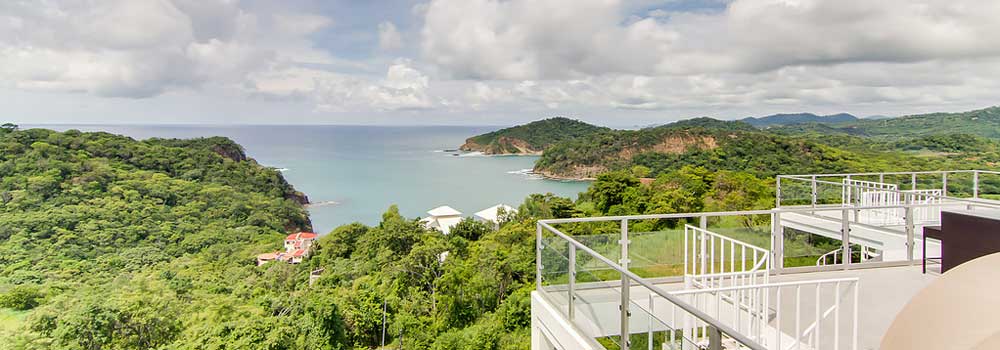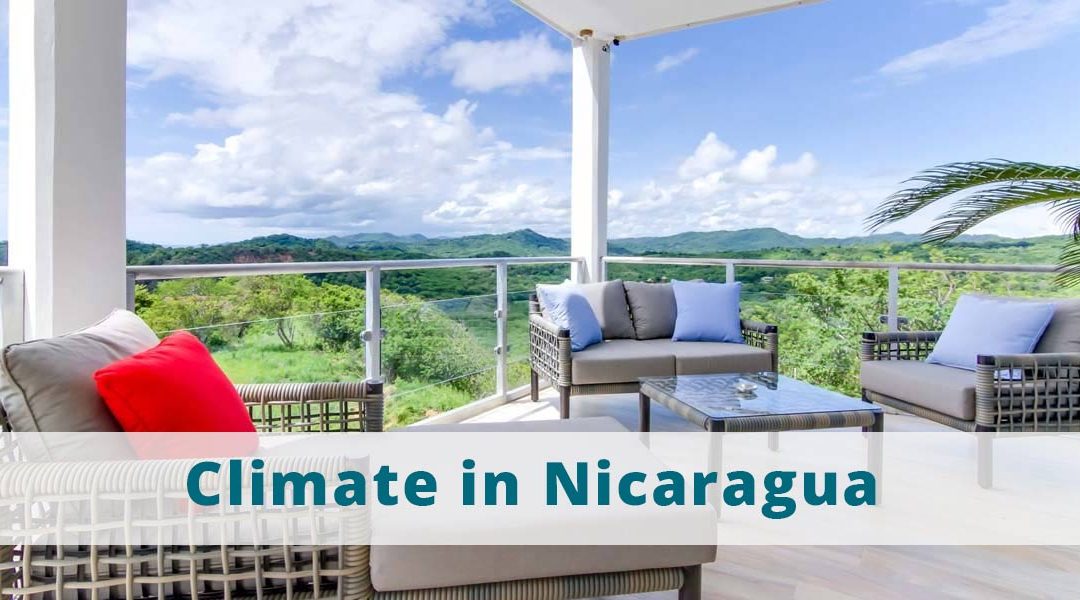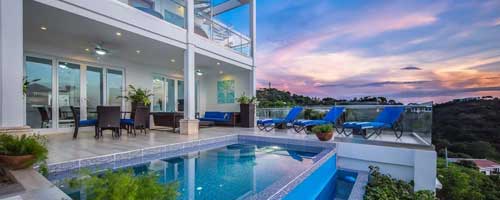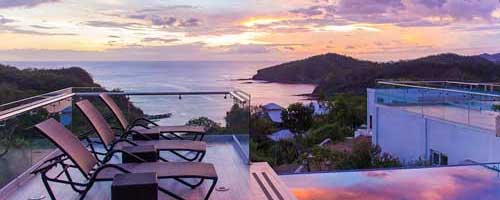Climate in Nicaragua
Nicaragua offers a climate that is suitable for everyone. It has a subtropical climate, which means it is less humid than countries further south, which is great news to those who don’t like extreme heat. While the average temperature of Nicaragua is 80 degrees Fahrenheit, there are attractive places in the highlands with cooler climates to consider retiring to, similar to San Diego.
The rainy and dry seasons exist in Nicaragua. The wet season runs from mid-May to mid-November, with October being the wettest month of the year. Medium to severe rainfall, lasting several days, is not uncommon in October. During this time of year, temperatures often vary between 80 and 90 degrees Fahrenheit. Surfers prefer to visit Nicaragua during the rainy season since the swells originate in the southern hemisphere, and the waves are better.
Mid-November through the end of May is the dry season, with May being the hottest and driest month. It becomes exceedingly windy and dusty as the months pass without a drop of rain. Plan your vacation for October or May if you’re seeking the “worst weather” months to see how you’ll like living here during those months. December, January, July, and August are the ideal months to visit. Nicaragua appears lush and gorgeous during these months, with trees full of leaves and flowers pouring over fences and adorning patios everywhere.
Weather in Nicaragua
When it comes to the weather in Nicaragua, there are two interesting phenomena: The deciduous trees’ leaves fall off in the dry season, just as they do in the cold winters up north. And the water in the ocean is icy. As a result, the trees fill with leaves, and the water temperature rises roughly 10 degrees as soon as the rain begins (which is irregular in the early months). This is the time of year when a day at the beach is ideal! The coolest months are November, December, and January, although “coolest” is relative. In most of Nicaragua, that may mean 75 degrees Fahrenheit.
Temperature
Annual rates of temperatures have risen by 0.9°C since the 1960s (at a rate of 0.2-0.4°C each decade).
Temperature differences have been seen to be increasing from year to year. In addition, the onset and length of the Cancula have also been noted to vary.
Precipitation
Since 1960, total rainfall has fallen by 5-6 percent every decade, owing to reduced wet season rainfall.
Since the 1960s, the fraction of rainfall falling in heavy events has grown (by approximately 2.2 events per decade). As a result, hurricane intensity has been reported to be on the rise.
You do, however, have alternative options if you don’t enjoy hot weather but want to live in a relatively affordable, safe, and attractive country where you can live healthier and happier. Matagalpa is a beautiful city on a mountain slope, with a crisp, clean, and colder environment. While it might get hot in April and May, the weather is normally pleasant all year. Because of its low elevation, it does not experience the dramatic dry and wet seasons but rather maintains its green appearance throughout the year. If you want to live somewhere where there isn’t a significant ex-pat community, cities surrounding Matagalpa like Esteli and Jinotega share this fantastic environment.
León
When it comes to other major cities in Nicaragua where you might choose to live, León is the most appealing. But don’t worry; if you live in this lovely and historic colonial city, you’ll be only a 25-minute drive from the beaches of Poneloya and Las Penitas, as well as other beaches like Las Salinas that are being constructed, so you’ll have plenty of options for cooling down. Alternatively, you can establish your home at the beach and visit Leon for theatre, concerts, international cuisine, and shopping.
León, like all of Nicaragua, has a hot climate all year, with highs of 34°C (94°F) and lows of 23°C (74°F). León can be visited all year, but it is best to go during the main tourist season around the beginning of the year. Because of the intense humidity in tropical Nicaragua, you’ll want to bring summer gear as well as waterproofs.
Managua
Managua is also extremely hot–it is a large city with a lot of automobiles and people–which is always a factor. In addition, Managua, the capital, is 50 kilometres (30 miles) from the sea and near a lake that provides moisture, making it a particularly hot city, especially in the spring, before the rains, and in May, the first wet month, when the rains begin to drop the temperature gradually. Maximum temperatures range between 31°C (88°F) and 31°C (88°F) from June to November, with increased humidity.
Managua receives 1,150 mm (45 in) of rain every year, and the dry season, which lasts from December to April, is particularly severe, with rain falling nearly never. June, September, and October are the foggiest months during the rainy season, which runs from May to mid-November, with more than 200 mm (8 in) of rain per month.
The sun shines brightly in Managua during the dry season, but only for a few hours each day during the wet season.
Granada
However, the heat is not as intense in Granada, located on Lake Cocibolca in Nicaragua, Leon, or Managua. The average high temperature in Granada is 32°C (90°F), and the average low temperature is a pleasant 23°C (74°F) throughout the year. The dry season, which runs from early December to late March, is the most excellent time to come since there is enough wind and breeze to keep the stinging tropical heat at bay.
Then there’s funky coastal San Juan del Sur, Nicaragua’s only city on the ocean. There’s always a breeze there, even when it’s hot.
San Juan del Sur’s Climate and Weather Throughout the Year
The rainy time of year in San Juan del Sur is overcast, the dry season is windy and partly cloudy, and the weather is hot and oppressive all year. The temperature ranges typically from 74°F to 89°F throughout the year, with temperatures rarely falling below 71°F or rising over 92°F.
According to the beach/pool score, the ideal time to visit San Juan del Sur for hot-weather happenings is from early December to late March.

The climate in San Juan del Sur
Clouds
Over the year, the average proportion of the sky covered by clouds varies dramaticallyin San Juan del Sur.
San Juan del Sur’s clearer season starts about November 20th and lasts for 4.8 months, finishing around April 14th. The sky is clear, generally clear, or partly cloudy 76 percent of the time on January 5th, the clearest day of the year, and overcast or mostly cloudy 24 percent of the time.
The rainy season starts about April 14th and lasts for 7.2 months, finishing around November 20th. The sky is gloomy or mostly cloudy 90% of the time on June 6th, the cloudiest day of the year, and clear, mostly clear, or partly cloudy 10% of the time.
Precipitation
A wet day is termedas one in which at least 0.04 inches of liquid or liquid-equivalent precipitation. Therefore, the probability of rainy days varies significantly throughout the year in San Juan del Sur.
From May 13th to November 8th, the wetter season lasts 5.9 months, with a greater than 23% chance of rain on any given day. On September 19th, the likelihood of rain reaches a high of 46 percent.
From November 8th to May 13th, the drier season lasts 6.1 months. On January 10th, the chances of a wet day are as low as 1%.
We distinguish between days with rain only, snow only, or a combination of the two types of precipitation. According to this classification, rain alone is the most common precipitation throughout the year, with a high likelihood of 46 percent on September 19th.
Rainfall
The monthly rainfall in San Juan del Sur varies significantly throughout the year.
From April 14th to December 11th, the rainy season lasts 7.9 months, with a typical 31-day rain of at least 0.5 inches. With an average total gathering of 7.6 inches, the most rain falls over the 31 days centred around September 26th.
From December 11th to April 14th, the year’s rainless season lasts 4.1 months. With an average total amount of 0.0 inches, the least rain falls on January 19th.
Sun
San Juan del Sur’s day length does not change significantly throughout the year, remaining within 47 minutes of 12 hours. Therefore, the shortest day in 2021 will be December 21st, with 11 hours, 28 minutes of daylight, while the longest will be June 20th, with 12 hours, 47 minutes of daylight.
The earliest sunrise is at 5:19 a.m. on May 30th, while the latest sunrise is at 6:07 a.m. on January 26th, 49 minutes later. The earliest sunset on November 17th is at 5:16 p.m., and the latest sunset is 55 minutes later on July 10th at 6:11 p.m.
In the year 2021, San Juan del Sur will not observe daylight saving time (DST).
Humidity
The dew point affects whether perspiration will evaporate from the skin and cool the body; hence, it measures the humidity comfort level. The lower the dew point, the drier it feels, and the higher the dew point, the more humid it feels. Dew point changes more slowly than temperature; therefore, while the temperature may decrease at night, a humid day is usually followed by a muggy night.
San Juan del Sur’s perceived humidity level, as defined by the percentage of time when the humidity comfort level is muggy, oppressive, or terrible, does not vary substantially throughout the year, remaining within 2% of 98 percent.
Wind
The wide-area hourly average wind speed and direction at 10 meters above the ground is discussed in this section. However, wind speed and direction change more widely than hourly averages at any given location due to local terrain and other factors, and instantaneous wind speed and direction vary more significantly than hourly averages.
Over the year, the average hourly wind speed in San Juan del Sur varies greatly depending on the season.
From November 22nd to April 18th, the windier half of the year lasts 4.9 months, with typical wind speeds of more than 12.7 miles per hour. Likewise, with an average hourly wind speed of 16.7 miles per hour, January 14th is the windiest day of the year.
Throughout the year, the primary average hourly wind direction in San Juan del Sur is east.
The temperature of the water
San Juan del Sur is located (e.g., ocean, sea, or large lake). This section discusses the water’s average surface temperature across a large area.
Over the year, the average water temperature varies seasonally.
Warmer water is available for 5.2 months, from May 3rd to October 10th, with an average temperature of over 83°F. May 30th is the warmest day of the year, with an average temperature of 84°F.
Cooler water is available for 2.4 months, from January 10th to March 22nd, when the average temperature is below 80°F. The coolest day of the year is February 10th, when the average temperature is 79°F.
When is the best time to visit San Juan del Sur?
We can compute two travel ratings to represent how pleasant the weather in San Juan del Sur is throughout the year.
The tourism score prefers clear, rainless days with perceived temperatures between 65°F and 80°F. The best time to visit San Juan del Sur for general outdoor tourist activities, according to this score, is from mid-December to mid-March, with a high point in the second week of January.
Clear, rainless days with apparent temperatures between 75°F and 90°F favour the beach/pool score. The ideal time to visit San Juan del Sur for hot-weather activities, according to this score, is from early December-late March, with thehighest score in the first week of January.
If you’re a sun-chaser and want to travel to San Juan Del Sur when the days are the longest, June is the best month to go. The rainy time of year in San Juan Del Sur typically occurs in the months leading up to October. It’s not unusual to see some heavy rain or light showers around this period, but on some days, the weather is fine for most of the day, with only a few droplets of rain dropping from a passing shower.
Here are a few celebrations and holidays that you should be aware of before you go to San Juan del Sur.
Topography
San Juan del Sur’s geographical coordinates are 11.253 degrees latitude, -85.870 degrees longitude, and 30 feet elevation for this study.
With a maximum height change of 758 feet and an average elevation above sea level of 119 feet, the topography within 2 miles of San Juan del Sur features considerable elevation changes. Significant elevation changes can be found within a 10-mile radius (1,414 feet). Within 50 miles, there are notable elevation changes (6,257 feet).
Within 2 miles of the San Juan del Sur, trees (28 percent), crops (24 percent), water (22 percent), and grassland (19 percent) cover the land; within 10 miles, water (45 percent) and trees (21 percent) cover the ground; and within 50 miles, water (69 percent) and trees cover the land (13 percent ).
The country of Nicaragua is noted for its lakes and volcanoes. Some volcanoes, like San Cristobal, rise immediately from the plain; others, like Concepción, rise from Lake Nicaragua. A mountain range called Cordillera Chontalea can be found in the north-central interior region. Above 1,000 meters (3,300 ft), in the alleged Tierras Templadas, the weather becomes milder in the highlands.
The coast of the Caribbean
There is nothing to refer to as a dry month on the Caribbean coast; temperatures are slightly lower than the west coast due to rain and trade breezes, but relative humidity is consistently high.
Bluefields
The average temperatures in Bluefields are slightly lower than on the west side, as you can see.
Bluefields receives 4,000 mm (160 in) of rain per year, and it rains heavily and nearly every day from May to December, with a high of 665 mm (26 in) in July. However, the rains only take a break in March and April, decreasing to roughly 80 mm (3 in) per month,typically in both cases in just 12 days.
It gets a little better further north, in Puerto Cabezas, where the annual rainfall is 3,000 mm (120 in), and rainfall is already less than 100 mm (4 in) in February.
The sun shines less frequently in Bluefields than in Managua and on the west coast because the rains are more recurrent and the rainy season is longer. The sky is often cloudy from June to August in particular.
The sea is warm all year on the Caribbean coast as well. East of Bluefields, there are two islands known as the Corn Islands (Big Corn Island or Isla Grande del Maz and Little Corn Island or Isla Pequea del Maz), both of which have a similar climate rainiest months being February and April.
Hurricanes
Nicaragua lies in the path of hurricanes that arrive from the east, i.e., the Caribbean Sea, and may affect the country anytime between June and November; however, they are most likely to impact August and October. Joan-Miriam, a particularly powerful storm that struck the United States in late October 1988, wreaking havoc across the country, particularly in Bluefields and Mitch at theend of October inthe year 1998.
Then there are the depressions, and tropical storms can form on the Pacific as early as mid-May; these are usually not intense because they affect the country early in their formation, but they can still bring heavy rainfall, causing landslides and floods.
Nicaragua at its Best
The best time for you to visit Nicaragua is from December-April in the central and western parts (December and January are slightly cooler in Managua). In contrast, the east coast is only accessible from March to April due to rainfall (but after all, you can go in February, particularly in the north, in Puerto Cabezas, where it rains less).
What should you bring?
Bring light clothing year-round, a sweatshirt or jumper for the evenings, and a raincoat or umbrella for the Tierras templadasas well as the slopes of volcanoes.
Bring light clothing, including a sweater or sweatshirt for the evenings from November to March, a hat for the sun, a light raincoat for showers and thunderstorms in the rainy season (May to mid-November Managua, and in practice, all year on the east coast).
So come to Nicaragua, take a look around, and remember that you may live there in almost any environment you want–except for the bitterly cold winters.



